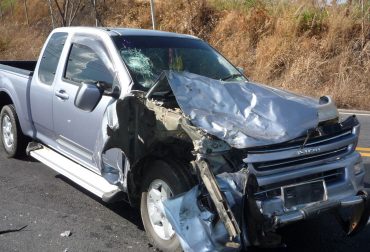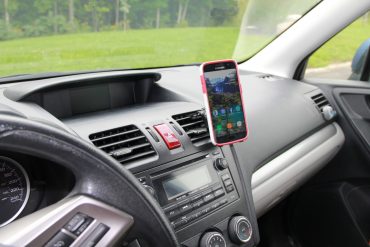
John Bleasby
Employers can be liable for their employees’ distracted driving
Canadian ContractorMassive fines in the U.S. are finding their way to Canada
Police across the country report that fatalities caused by distracted driving are surpassing those caused by high speed or impairment. As an employer, did you know that if linked to an accident related to distracted driving, your company could be bankrupted by fines and legal fees if it was determined reasonable precautions had not been taken to prevent the behavior within your company?

The number of accidents caused by distracted driving is surpassing speeding and impairment. Employers can be held liable if the accident is linked to work.
What is “distracted driving”?
The RCMP has a definition for distracted riving that is wide-ranging in scope:
“Distracted driving is a form of impaired driving, as a driver’s judgment is compromised when they are not fully focused on the road. Distracted driving qualifies as talking on a cell phone, texting, reading (e.g. books, maps, and newspapers), using a GPS, watching videos or movies, eating/drinking, smoking, personal grooming, adjusting the radio/CD and playing extremely loud music. Even talking to passengers and driving while fatigued (mentally and/or physically) can be forms of distracted driving.”
Law firm Gowlings WLG warns employers that, “when something bad happens, an employer will always be scrutinized and often be blamed. Even where a rule is in place and people have been trained in safe practice, a breach of that practice will trigger an examination of whether the employer adequately enforced the rule.”
Mobile chats with employees are very common in construction
There are numerous scenarios, many innocuous, that can bring liability risks to an employer. Imagine a employee causes an accident while calling to discuss a work-related issue — the employee may simply be on his/her way to work. There are documented cases in the U.S. where the employer was found liable in part for the accident that occurred during the call. Or imagine your employees have been instructed to respond promptly to emails from the boss — they may be compelled to text and drive. Even an employee causing an accident chatting to his wife while driving a company vehicle can leave the employer vulnerable.
Law firm Gowlings WLG recommends some specific actions that employers can take to prevent accidents while driving and talking.
- Discourage the use of the phone while driving – avoid prompting distracted driving, by not calling, texting or emailing someone when he/she is known to be operating a vehicle;
- Adopt a policy requiring employees to use only hands-free devices for phone calls while driving, and not to engage in texting or email while driving;
- Communicate that policy frequently, in person and in writing (emails);
- Reinforce that policy through reminder training, such as the very dramatic and effective video public service announcements now ubiquitous on the web;
- Have the Joint Health and Safety Committee or worker safety representative include distracted driving on the list of issues which it inspects for and reports upon;
- Examine employee call, text and email traffic to assess whether they appear to be engaging in those activities while operating a vehicle;

The author picked up this vent-mounted mobile phone holder for under $20 at Best Buy.
Policies can vary, but the purpose should be the same
In terms of the employee policy recommendation referred in Point 2, it can be as straight-forward as the one suggested by roadsafetyatwork.ca. As that website points out, the key is to make the policy practical, applicable to the work, clearly communicated, understood and reinforced to your employees, and included regularly in the company’s scheduled work safety meetings.
While you might decide to have a blanket zero-tolerance policy regarding the operation of mobile devices for any purpose while a vehicle is in motion (reading/writing emails and messages are obvious), many companies might choose to allow some restricted hands-free operation. There are several ways to accomplish this. The best is to ensure that your vehicles, or those owned by your employees, have an active Bluetooth connection connected to the mobile device . Even so, there are important steps to ensure that the device remains hands-free.
1. The mobile phone should be set to auto answer so nothing needs to be touched.
2. If the mobile device is used for maps and directions, be sure it’s mounted on the dash or on a car ventilation outlet, not sitting on the lap of the driver.
3. Keep the battery topped up by plugging the device into a USB port.
4. Consider a voicemail message option that indicates that incoming calls cannot be received while the vehicle is in motion and will returned later.
As for hands-free devices available on the market, check out this list provided by crn.com.
Larger and larger fines are being assessed to employers found liable for accidents caused by distracted driving. Any work-related driving can be included: deliveries, travels to on-site inspection or, as mentioned above, even off-hours conversations of a work nature.
Got feedback? Make your opinion count by using the comment section below,
or by sending an email to:
JBleasby@canadiancontractor.ca
Follow John on Instagram and on Twitter for notifications about his latest posts

![]()

Leave a Reply